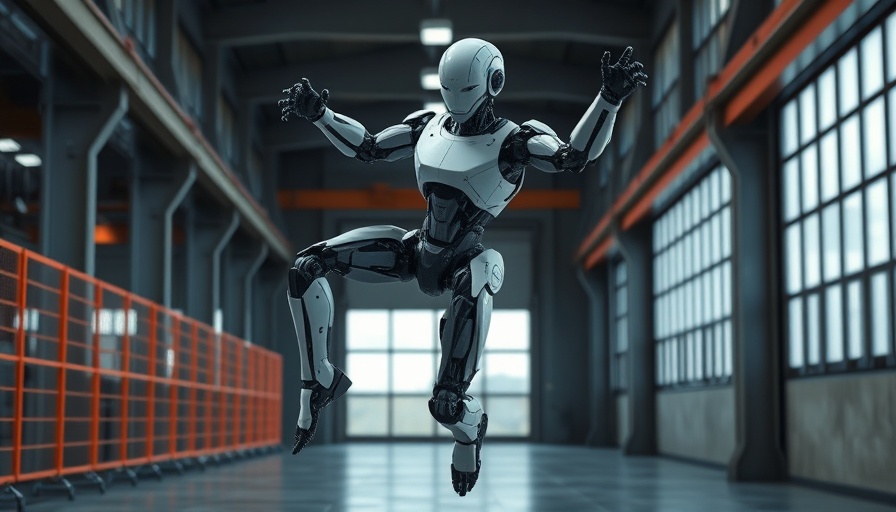
Boston Dynamics' Atlas: Redefining Robotics with Breakdancing Moves
In the rapidly evolving world of robotics, Boston Dynamics has unveiled a remarkable leap forward with its humanoid robot, Atlas. The latest demonstration showcases the robot's newfound ability to not only run but also perform impressive acrobatic movements, including a front handspring and a cartwheel. This complex motion is more than just a party trick; it signifies significant advancements in how robots perceive and interact with their environment.
Impressive Human-Like Movements: The Future of Robot Performance
The visual presentation of Atlas moving fluidly through athletic maneuvers such as breakdancing is both mesmerizing and thought-provoking. The intricate movements captured in a recent video challenge our perceptions of what robots can achieve. The human-like quality of Atlas' actions stems from its sophisticated learning algorithms, which empower the robot to adapt its movements dynamically. Through a combination of reinforcement learning and real-time environmental feedback, Atlas performs with a level of athletic intelligence that could redefine the capabilities of robots across various industries.
The Technology Behind the Moves: Athletic Intelligence
At the heart of Atlas lies an innovative system Boston Dynamics refers to as "athletic intelligence." This concept encompasses the seamless integration of perception and control, allowing the robot to assess its surroundings almost instantaneously using depth sensors. By generating a 3D view of its environment, Atlas can execute movements with unprecedented precision and balance. Such advancements signal a turning point in robotics, illustrating how machines can learn from their surroundings and mirror human agility.
Real-World Implications: Beyond Entertainment and into Industry
While the captivating antics of Atlas may seem tailored for entertainment purposes—such as a potential entry in a robot Olympics—they hint at broader applications in real-world scenarios. Industries that require automatons capable of navigating dynamic spaces, from warehouse logistics to personal assistance, stand to gain significantly from this technology. The potential for robots to undertake complex tasks that demand agility and quick decision-making could revolutionize sectors such as manufacturing, healthcare, and even disaster response.
Looking Ahead: What’s Next for Atlas and Robotics?
Although Boston Dynamics hasn’t announced an official timeline for the commercial rollout of Atlas, the ongoing developments suggest that we might be on the cusp of seeing advanced robotics integrated more deeply into our daily lives. The evolution of robots from mere machines to entities capable of complicating movements emphasizes the importance of continual research and innovation within the field.
As organizations across industries seek to integrate AI and robotics into their operational frameworks, understanding the implications of such technologies becomes essential. Boston Dynamics’ Atlas exemplifies not just a technological marvel, but also a glimpse into the future of collaborative robots—the kind designed to work alongside humans, enhancing productivity and adaptability.
In conclusion, Boston Dynamics has showcased an impressive evolution in robotic capabilities with Atlas. Its ability to mimic human movements is a testament to the future where robots become more adaptable, more functional, and eventually essential in various domains of work and life. As technology continues to advance, the audience—comprised largely of executives and decision-makers—should be prepared for the integration of robotics in their business strategies.
 Add Row
Add Row  Add
Add 




Write A Comment